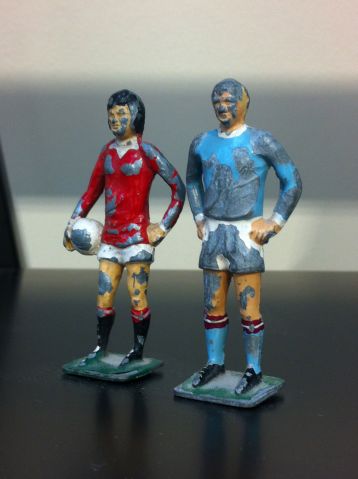Some objects I’ve selected for this project have impacted on me more than others and I’ve used this blog to write about it. Today’s objects are a case in point – a tiny, bronze vintage pendant and an even tinier bronze brooch, both imprinted with ballroom dancers. The initials marked on the smaller of the two suggest that this was once the brooch of a qualified dance teacher. The pendant might have been presented as an award of some sort, or it’s possibly an item to signify the former owner’s affiliation to a national society of ballroom dancers – who knows? Unlike the ballerina brooch I wrote about in an earlier post, I know nothing about these particular pieces of jewellery, other than their obvious association with dance; I have no emotional attachment to them, but was attracted to the vintage patina and the elegance of the dancers.
In terms of collecting and holding onto small items like these, the narrative associated with them often interests me just as much as the actual objects themselves. I don’t know the story behind these dance-related pieces but they’ve stirred my imagination and led me to think about who they might once have belonged to. Were they valued as something special at some point in somebody’s life and if so, at what point did they change from being treasured to something discarded?
While I will never know their history, I do know that I won’t be parting with them any time soon. Though of no sentimental value to me, I feel strongly attached to them. Perhaps because they remind me of my own parents who, years ago, tried so hard to learn how to waltz, tango and foxtrot – putting in hours of practise in my sister’s and mine bedroom, where they pushed our twin beds against the wall to make space to rehearse their steps before their next week’s lesson. The laughter was infectious as Mum ribbed my Dad about his ‘two left feet’ and utter lack of rhythm. Memories of them, in love, shuffling around to the sound of music I still recall – these moments encapsulated in time, tangible reminders of a happy past.
Cut to the present – the harsh, stark reality of it and unbearable, heartbreaking numbers of COVID-19 deaths being reported day after day. I’ve welcomed the continuity and structure that the ‘Connected’ project has provided at a time when, like so many of us, I’ve felt unable to take on the full horror of what’s going on around me. Reaching out and staying connected feels ever more important in these unimaginable, unprecedented times.







